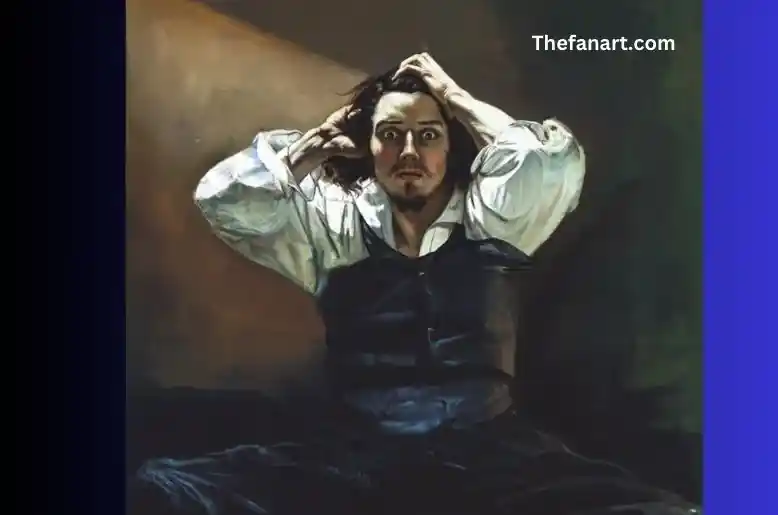The art world is filled with iconic self-portraits. It captures the raw emotions of the artist quite like Gustave Courbet’s “The Desperate Man.” Painted between 1843 and 1845. This work bring a window into the soul of a young artist grappling with poverty and ambition.
A Young Artist in Paris
In 1839, a 20-year-old Courbet arrived in Paris with dreams of becoming a lawyer. The allure of art proved too strong. He soon abandoned his legal studies to pursue a career as a painter. “The Desperate Man” is believed to have been created during this early and tumultuous period in his life. Read about Avvampante Giugno now.
A Raw Depiction of Desperation
The painting is a powerful study in contrasts. A young Courbet, with wild eyes and an unkempt beard, dominates the canvas. His hands grip his hair, a gesture that conveys a deep sense of anguish. The stark white of his shirt stands out against the muted tones of the background. Further emphasis the emotional turmoil he experiences.
Beyond Romanticism
The painting reflects the dramatic style of Romanticism. It was popular at the time, it also hints at Courbet’s future artistic direction. The focus on raw emotion and the rejection of idealised beauty foreshadow. His groundbreaking realist style that would later challenge the art world.
A Personal Treasure
“The Desperate Man” remained a personal treasure for Courbet. He kept it in his studio throughout his life, even during his exile in Switzerland. This suggests that the painting wasn’t just a portrayal of a fleeting moment, but a reflection of the artist’s constant struggle for artistic expression and recognition.
Today, “The Desperate Man” serves as a powerful reminder of the challenges faced by young artists and the unwavering passion that can fuel artistic genius. It’s a testament to Courbet’s emotional honesty and a captivating glimpse into the early years of a revolutionary painter.
The Transformation
As the Desperate Man continued on his journey, a remarkable transformation began to take place. This chapter explores the profound changes that occurred within him, both externally and internally.
In the midst of his struggles, the Desperate Man rediscovered his long-lost passion. He rekindled his love for painting, a talent he had abandoned in the face of adversity. Through his artwork, he found an outlet for his emotions and a means to express his newfound sense of hope and optimism.
The Desperate Man’s transformation did not go unnoticed. His unwavering determination and resilience inspired those around him, becoming a beacon of hope for others who were also facing their own battles. Through his words and actions, he encouraged others to never lose sight of their dreams and to always believe in the power of redemption.



